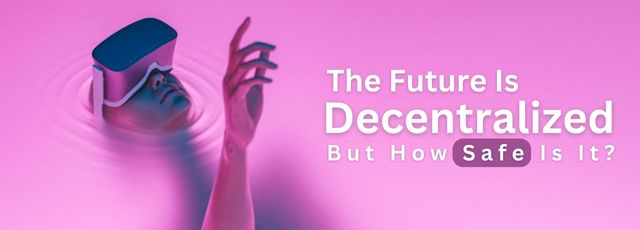With the continued growth and development of digital technologies, the concept of a decentralized internet, or Web 3.0, has been gaining considerable attention. This new phase in the internet’s evolution promises increased user control, better security, and a more interactive online experience. However, its implications on user safety, particularly data protection, remain under debate.
Let’s delve into the world of decentralized applications, including the metaverse and digital currencies, and unpack their safety implications.
The Growing World Of Decentralized Applications
Decentralized applications, or dApps, operate on a peer-to-peer network as opposed to being controlled by a single authority. This means users get to enjoy more control and privacy as there is no central entity collecting their data or deciding how their content should be distributed. Two significant applications in the decentralized web are the metaverse and decentralized finance (DeFi), often expressed through digital currencies.
The metaverse is a virtual space created by mixing both physical and digital worlds that can be shared and populated collectively. In simpler terms, it’s a virtual world where users can interact with a computer-generated environment and other users. That has significant implications for social interaction, business, and entertainment. Yet, despite the many opportunities, there are significant safety concerns.
Digital currencies or cryptocurrencies represent another significant development in the decentralized web. Cryptocurrencies, such as Bitcoin and Ethereum, offer an alternative to traditional, centrally controlled financial systems. They enable peer-to-peer transactions, reducing the need for intermediaries and providing increased privacy. However, the safety of these digital assets is a topic of ongoing discussion.
The Decentralized World Isn’t Without Its Issues
A key issue in the decentralized web is data safety. In centralized systems, data is stored and controlled by one entity, creating a single point of failure. This makes it vulnerable to breaches and attacks. On the contrary, decentralized systems store data across various nodes, making it harder for hackers to cause significant damage.
However, user data safety in the metaverse and decentralized finance is a complex issue. Yes, data isn’t stored or controlled by a single entity. Similar to centralized browsing, you can now delete your personal info from Google search, but data spreads further than that. As we’ve seen with numerous blockchain and DeFi platforms, vulnerabilities can and have been exploited, leading to substantial losses.
One high-profile example was The DAO hack in 2016. The DAO (Decentralized Autonomous Organization) was a type of investor-directed venture capital fund on the Ethereum blockchain. However, a vulnerability in its code allowed a user to siphon off one-third of DAO’s funds (about $50 million at the time). This demonstrated that even though decentralized systems don’t have a single point of failure, they are not immune to attacks.
On the other hand, in a well-designed metaverse, users should technically have full control and ownership of their data. Yet, the novelty of the technology, lack of comprehensive legislation, and potential misuse of data remain concerns. Consequently, while user data may be safer from large-scale breaches, risks can still arise due to vulnerabilities in dApp codes or user behavior.
The Primary Safety Concerns
In the context of safety, the primary concern with cryptocurrencies relates to their misuse in illegal activities due to their anonymity features. Moreover, the volatility of digital currencies and the lack of regulatory oversight expose users to significant financial risk.
Therefore, while the decentralized internet and its applications promise a host of benefits, it is not without risks. Users must be aware of these risks and adopt suitable measures to protect their data and assets. Furthermore, developers and stakeholders in the decentralized web should prioritize security and transparency to boost user confidence and safety.
The decentralized internet represents a new frontier in digital technology. The metaverse and digital currencies are just the tip of the iceberg. The future promises even more revolutionary applications, bringing along fresh opportunities and challenges. While the safety of these technologies is not absolute, their potential benefits are too significant to ignore. With the right measures and responsible use, we can look forward to a safer, more interactive, and user-centric web.
